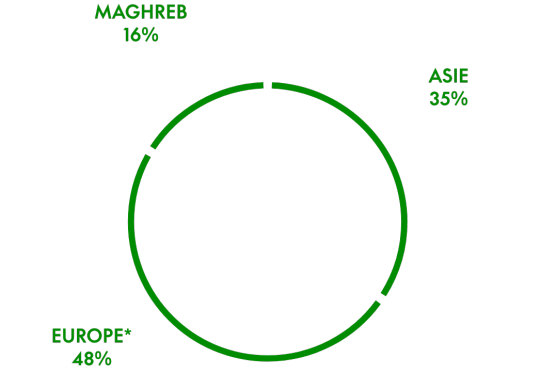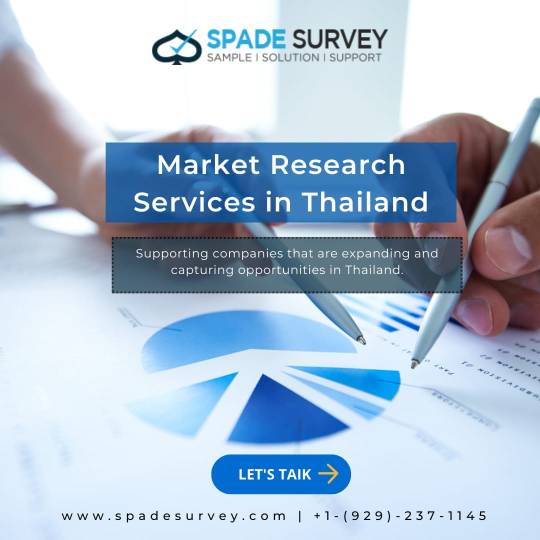#primary research company
Text

1lotusresearch is a leading primary research company that specializes in providing comprehensive and high-quality research solutions to businesses across various industries. With a team of experienced researchers, analysts, and consultants, we offer customized research services tailored to meet the unique needs and objectives of our clients.
0 notes
Text
godddd i made the mistake of checking the side gig chat and guess who got yelled at again ??????
#silver jelly#this bitch called my article 'not well researched' when all i used for research were articles from HER COMPANY'S BLOG#and primary sources and comp articles that SHE GAVE ME .#they want it redone by friday like ?????????????/ i don't have time i literally do not fucking have time to deal with it especially bc it'd#be unpaid despite the fact that this isn't my fault : |
6 notes
·
View notes
Text

Immortalized cell lines are highly regarded for scientific research. Over the period of a century, we have been able to collect numerous immortalized cell lines. They are either harvested from the tumors of individuals suffering from the condition. Unlike primary cells, which have a limited lifespan, immortalized cell lines can be generated by making genetic alterations that encourage continuous growth and division. This conversion is essential for providing a stable and sustainable source of biological material, which greatly benefits areas such as drug development, cancer studies, and genetic research. Having a deeper understanding of these procedures improves our capacity to effectively harness immortalized cell lines across various scientific disciplines.
Learn More: www.kosheeka.com
#kosheeka#cell culture#research#biotech#exosomes#mscs#primary cells#biotech company#mesenchymal stem cells#cells
3 notes
·
View notes
Text
watching a video for the biomed research class i'm in and this guy is like "i have faith that humans are not going to be using our gene editing abilities (which, for the record, are fairly limited) to make designer babies. we're ethical!" and it's like i wrote an essay on this and there are companies out there already offering genetic screenings of IVF babies for things like eye color and "intelligence". so uh. yeah. you have too much faith.
#unfortunately i didn't back up the fucking essay and lost it when my high school google drive was deleted#which i am annoyed at past me for not saving#yeah it was a bad essay bc i wrote it in a day but i had legit sources#and would like to have them to reference!!#also related but the biomed research prof was like: our last class will talk about biomed ethics and idk maybe we should be talking about#them more than just the last day????? hello???#like we're working with flies and not humans but Still!!!!!!! insane#if i can find time and get into the class im gonna take the biomed ethics class as my last GE#so so so mad i did not back up the essay like what was i thinking#edit: found the essay in a shared folder somewhere. its kind of out of date and i'd like to read like the primary literature but my point#still stands. there is literally a company out there that will screen ur ivf babies for 'low intelligence'#and like the economic inequality alone baked into this whole thing is already a nightmare dont get me started
4 notes
·
View notes
Text
How to Progress ahead with Mathematics?

#Mathematics graduates are versatile and can find opportunities in many other industries as well#depending on their specific interests and areas of expertise. The strong analytical and problem-solving skills acquired through a Mathemati#Market Research Analyst#As a market researcher for a company#you gather data from customers and competitors#assist in developing goals and strategies#improve your customer base#and beat your competitors.#As a market researcher#you will also design surveys#formulate reports#track market trends#and present information to executives. As you gain experience#there are plenty of scopes for you to manage a team of researchers and evaluate strategies.#The Faculty of Mathematics at Poddar International College is simply outstanding and proficient. Besides#the students have bright prospects as they have the best placements here.#Financial Planner#Financial planners assist individuals and companies in managing their financial assets. They are also involved in assisting individuals wit#Developing effective financial strategies for businesses and individuals.#Setting financial goals#assessing financial risks#and helping to ensure retirement or investment plans are among their primary duties.#They help companies formulate stock market investment strategies#real estate investing strategies#and new business ventures.#There are many professional skill and soft skills enhancement sessions for the students of Mathematics at Poddar International College.#Insurance Underwriter#Insurance underwriters are the ones who#on behalf of the insurance company#evaluate
0 notes
Text
Exploring Factor Analysis in Research: Key Types and Examples
Introduction
In the realm of market research, data is the driving force behind informed decision-making. Understanding the underlying patterns in data is essential for researchers to make sense of complex datasets. Factor analysis is a powerful statistical technique used to identify underlying relationships among a large number of variables. It is particularly useful in survey research, where it helps to reduce data dimensionality, interpret latent constructs, and uncover the hidden structure of data. This blog explores the types of factor analysis, their applications in survey research, and examples relevant to primary market research.
What is Factor Analysis?
Factor analysis is a multivariate statistical method used to identify underlying factors or constructs that explain the patterns of correlations within a set of observed variables. It helps researchers condense a large set of variables into a smaller set of factors without losing significant information. These factors are not directly observable but are inferred from the observed variables.
In survey research, factor analysis is often employed to explore complex relationships among items (questions) and to validate survey instruments by ensuring they measure what they are intended to measure.
Types of Factor Analysis
Factor analysis can be broadly classified into two types: Exploratory Factor Analysis (EFA) and Confirmatory Factor Analysis (CFA). Each type serves different purposes and is applied in different contexts based on the research objectives.
1. Exploratory Factor Analysis (EFA)
Exploratory Factor Analysis (EFA) is used when the researcher does not have a preconceived notion about the structure or number of factors underlying a set of variables. It is a data-driven approach used primarily in the early stages of research to explore the underlying factor structure and to identify potential relationships among variables.
Purpose: To uncover the underlying structure of a relatively large set of variables.
Approach: The method involves extracting factors, rotating them to achieve a simple structure, and then interpreting them.
Key Techniques: Common methods include Principal Component Analysis (PCA) and Maximum Likelihood Estimation (MLE).
2. Confirmatory Factor Analysis (CFA)
Confirmatory Factor Analysis (CFA) is used when the researcher has a specific hypothesis or theory about the structure of the factors and the relationships between observed variables and latent factors. It is a more hypothesis-driven approach compared to EFA and is often used to confirm or validate the factor structure identified in previous studies or theoretical frameworks.
Purpose: To test whether a predefined factor structure fits the observed data.
Approach: CFA requires specifying the number of factors, the relationships between factors, and the observed variables they are associated with.
Key Techniques: Model fit indices (e.g., Chi-square test, RMSEA, CFI, TLI) are used to evaluate the adequacy of the factor model.
Steps in Conducting Factor Analysis in Survey Research
The process of conducting factor analysis involves several critical steps:
Step 1: Data Collection and Preparation
Before conducting factor analysis, researchers need to collect data using surveys or questionnaires. The data should be adequately prepared by handling missing values, checking for outliers, and ensuring that the data meets the assumptions for factor analysis, such as linearity, normality, and sufficient sample size.
Step 2: Assessing the Suitability of Data for Factor Analysis
To determine whether the data is suitable for factor analysis, researchers can use several tests:
Kaiser-Meyer-Olkin (KMO) Test: This test measures sampling adequacy. A KMO value above 0.6 is generally considered acceptable.
Bartlett’s Test of Sphericity: This test checks whether the correlation matrix is an identity matrix. A significant result (p < 0.05) indicates that factor analysis is appropriate.
Step 3: Extracting Factors
The next step is to extract factors from the data. Several methods can be used for factor extraction:
Principal Component Analysis (PCA): A commonly used method for extracting uncorrelated factors.
Principal Axis Factoring (PAF): A method that considers only shared variance and is often used when the goal is to identify underlying constructs.
The number of factors to be retained can be determined using criteria like Eigenvalues > 1 rule, Scree Plot, and Parallel Analysis.
Step 4: Factor Rotation
To achieve a simpler and more interpretable factor structure, rotation methods are applied. Rotation does not change the underlying solution but makes it easier to interpret. The two main types of rotation are:
Orthogonal Rotation (e.g., Varimax): Assumes that factors are uncorrelated.
Oblique Rotation (e.g., Promax, Direct Oblimin): Allows for correlated factors.
Step 5: Interpreting Factors
After rotation, the next step is to interpret the factors by examining the factor loadings, which indicate the correlation of each variable with the factor. Variables with high loadings on the same factor are grouped together, and each factor is assigned a name that reflects the common theme of the variables it includes.
Step 6: Validating the Factor Structure
To ensure that the identified factor structure is reliable and valid, researchers may use techniques like cross-validation, split-half reliability, and confirmatory factor analysis (CFA).
Applications of Factor Analysis in Market Research
Factor analysis has numerous applications in market research. Some key applications include:
1. Developing and Refining Survey Instruments
Market researchers use factor analysis to develop new survey instruments or refine existing ones by identifying redundant or irrelevant items, ensuring that the survey measures the intended constructs.
2. Customer Segmentation
Factor analysis can be used to identify underlying dimensions of customer preferences, attitudes, or behaviors. These dimensions can then be used to segment customers into distinct groups for targeted marketing efforts.
3. Product Positioning and Development
By analyzing consumer perceptions and preferences, factor analysis helps companies understand the key factors driving product choices. This information can guide product development, positioning, and messaging strategies.
4. Measuring Brand Equity
Factor analysis is widely used to assess brand equity by identifying underlying factors that influence consumer perceptions, such as brand awareness, perceived quality, and brand loyalty.
Examples of Factor Analysis in Market Research Surveys
Here are some practical examples to illustrate the application of factor analysis in market research surveys:
Example 1: Understanding Consumer Preferences for a New Beverage Product
A beverage company wants to understand the factors that influence consumer preferences for a new drink. They design a survey with 30 questions covering various attributes like taste, packaging, price, availability, health benefits, and brand reputation. Using EFA, the company identifies three main factors: Product Attributes (taste, health benefits), Marketing Effectiveness (packaging, advertising), and Brand Perception (brand reputation, trust). These insights guide the company’s product development and marketing strategies.
Example 2: Evaluating Service Quality in the Hospitality Industry
A hotel chain wants to assess customer satisfaction and service quality across its properties. They use a survey with questions related to room cleanliness, staff friendliness, amenities, and overall experience. By conducting CFA, the hotel validates a four-factor model of service quality: Tangibles, Reliability, Responsiveness, and Empathy. This model helps the hotel chain identify areas for improvement and enhance customer satisfaction.
Challenges and Limitations of Factor Analysis
While factor analysis is a valuable tool in survey research, it has several limitations:
Subjectivity in Interpretation: The naming and interpretation of factors are subjective and can vary between researchers.
Assumptions: Factor analysis relies on assumptions such as linearity, normality, and adequate sample size. Violation of these assumptions can lead to inaccurate results.
Complexity: Factor analysis requires expertise in statistical techniques and software, which may be challenging for non-statisticians.
Overfitting: Over-extraction of factors can lead to overfitting and spurious results, which do not generalize well to other samples.
Conclusion
Factor analysis is a powerful and versatile technique in survey research that enables market researchers to uncover underlying patterns in complex datasets, develop and validate survey instruments, and gain deeper insights into consumer behavior. Understanding the different types of factor analysis, their applications, and best practices for conducting them can help researchers leverage this tool to make more informed, data-driven decisions.
By implementing factor analysis effectively, primary market research companies like Philomath Research can enhance the quality of their survey research, provide valuable insights to clients, and stay ahead in a competitive market.
FAQs
1. What is factor analysis in research?
Factor analysis is a statistical technique used to identify underlying relationships among a large number of variables. It helps researchers condense a large set of variables into a smaller set of factors, uncovering the hidden structure of the data without losing significant information.
2. Why is factor analysis important in survey research?
Factor analysis is crucial in survey research because it helps reduce data dimensionality, identify patterns among variables, validate survey instruments, and ensure that surveys measure the intended constructs. It simplifies complex datasets and enhances the interpretability of survey results.
3. What are the main types of factor analysis?
The two main types of factor analysis are:
Exploratory Factor Analysis (EFA): Used when the researcher does not have a preconceived structure or number of factors. It explores the data to identify potential relationships.
Confirmatory Factor Analysis (CFA): Used when the researcher has a specific hypothesis or theory about the factor structure. It tests whether the data fits a predefined model.
4. How is Exploratory Factor Analysis (EFA) different from Confirmatory Factor Analysis (CFA)?
EFA is data-driven and used to explore the underlying factor structure without any predetermined model.
CFA is hypothesis-driven and used to test if a specific factor structure fits the observed data based on a predefined model.
5. What steps are involved in conducting factor analysis?
The steps in conducting factor analysis include:
Data collection and preparation.
Assessing the suitability of data for factor analysis.
Extracting factors using methods like Principal Component Analysis.
Rotating factors to achieve a simpler structure.
Interpreting factors based on factor loadings.
Validating the factor structure using techniques like Confirmatory Factor Analysis.
6. How do you determine the number of factors to retain in factor analysis?
The number of factors to retain can be determined using criteria like the Eigenvalues > 1 rule, Scree Plot, and Parallel Analysis. These methods help identify the number of factors that explain a significant amount of variance in the data.
7. What are factor loadings, and why are they important?
Factor loadings are coefficients that represent the correlation between observed variables and the underlying factors. High factor loadings indicate that a variable strongly relates to a specific factor. They are essential for interpreting the meaning of factors.
8. What is the purpose of rotating factors in factor analysis?
Factor rotation is used to achieve a simpler, more interpretable factor structure. It doesn’t change the underlying solution but makes it easier to understand by reducing the number of variables with high loadings on multiple factors. Common rotation methods include Orthogonal (Varimax) and Oblique (Promax) rotations.
9. Can factor analysis be used to validate survey instruments?
Yes, factor analysis, especially Confirmatory Factor Analysis (CFA), is widely used to validate survey instruments. It helps confirm whether the survey measures the intended constructs and assesses the reliability and validity of the survey items.
10. How is factor analysis used in customer segmentation?
Factor analysis identifies underlying dimensions of customer preferences, attitudes, or behaviors. These dimensions help segment customers into distinct groups, allowing businesses to tailor their marketing strategies to target specific customer segments effectively.
#factor analysis#market research companies#market research#primary market research#survey research#data-driven approach
0 notes
Text
Market Research Done Right | Unimrkt Research
youtube
Unimrkt Research is a Market Research Outsourcing firm that helps global Market Research organizations with their primary and secondary research and support needs.
We offer a complementary range of research services, like Qualitative Market Research, Quantitative Market Research, Business Research and Research Support Functions.
Our primary market research methods like telephonic interviews and online surveys are top notch in the industry with 450+ CATI stations equipped with the state of the art technology and we serve our clients every time when it comes to understanding the market pain points.
Unimrkt takes pride in being recognized by its associates as upbeat, proficient, and principled in collecting and delivering hard-to-get specialized, quality data. Learn more: www.unimrkt.com
#unimrkt research#qualitative market research#business market research#market research firms#healthcare market research#survey programming#online survey company#primary market research#healthcare market research companies#market research company#Youtube
1 note
·
View note
Text
Unlock the secrets of effective market research with our comprehensive guide. Learn techniques and strategies to drive business success.
#Market research company#market research#secondary market research#primary market research#market research analyst
0 notes
Text
Sandro
The ready-to-wear-brand Sandro, known for their casual but elegant streetwear has acknowledge its responsibility towards the environment. Despite not being sustainable yet, the brand has come up with a specific plan. Sandro aims to make by 2025 over 60% of their products eco-responsible. By the end of this year, 80% of their suppliers will be certified. Besides, since 2019 they reduced 20% of their clothing pieces. Furthermore, they permanently removed the usage of animal fur and exotic leathers from their collections.

Sandro Autumn Winter 2022-2023 Ready-to-Wear

Autumn Winter 2022-2023 Ready-to-Wear

Sandro- Spring Summer 2022 Ready-to-Wear


Spring Summer 2022 Ready-to-Wear
PRODUCTION PROCESS

Production takes place at 110 partner sites in 30 countries, including Portugal, France, Italy, Turkey, China, Serbia, Bulgaria and Tunisia. When selecting partners, we use a process based primarily on the search for technical—sometimes rare—expertise, as well as social and environmental audits.
In addition to the suppliers with whom we've fostered long-standing partnerships, we are constantly looking to strengthen the traceability of our collections to reveal every step of our production chain, right back to the raw material.
Our daily concern is also to produce in a better way, i.e. produce as close as possible to what we need. This is why we've implemented a new set of demand-planning tools in order to better adjust the volumes produced, increase distribution agility and therefore limit the amount of leftover stock at the end of a season.
SUPPLIER AUDITING
The social and environmental compliance policy for our suppliers is based on the following measures:
• All suppliers must sign a code of conduct outlining our requirements in detail.
• When referencing a new supplier, social audits or the social certifications of their manufacturing sites must be collected and reviewed.
• Social and environmental audits must be carried out, whether conducted by Sandro or requested by other companies according to the standards recognised by the SMCP Group (BSCI, Sedex, WRAP, WCA, and the SA8000 for social; ISO 14001, bluesign, STeP by OEKO-TEX for environmental).
THEIR MATERIALS AND HOW TO CARE FOR THEM
The starting point for creating our clothing and accessories is the selection and production of the raw materials used to make them. Upstream of our value chains is also where the most significant part of our sector's environmental impact lies.
We take the greatest care in selecting the materials we use. Our aim is to offer our customers high quality materials—like cotton, linen, viscose, silk, wool and cashmere—which are produced and processed using methods with a reduced environmental impact.
Keen to improve the environmental footprint of the materials making up our creations, we are now focusing our efforts on sourcing the materials we use most in our collections sustainably: organic cotton, Responsible Wool Standard (RWS) certified wool, Leather Working Group (LWG) certified leather and recycled polyester. What's more, 100% of our jeans are treated using a process that uses 95% less water than traditional treatments.
These materials represent a real challenge from an economic and supply perspective. Only available in limited quantities, we do everything we can to ensure their availability by strengthening the partnerships we have with our suppliers.
in 2022:
52% of our men's and women's collections are made using materials and/or manufacturing processes with a lower environmental impact.
2025:
80% of our men's and women's collections will be made using materials and/or manufacturing processes with a lower environmental impact.
THEIR DEFINITION OF A MORE SUSTAINABLE PIECE
At Sandro, a product is considered more sustainable if it respects one or more of these criteria:
- at least 50% of its main material is organic, recycled or meets criteria for preserving ecosystems (forests, pastureland, etc.).
- its denim is treated using eim (environmental impact measuring) technology, saving 95% of water compared to traditional treatment techniques
- the tannery, for leather items, conforms to the best industry practices in terms of water consumption, energy consumption and the use of chemicals.
0 notes
Text
I’m gonna need capitalism to release its grip on me so I can lay down and relax with nothing to do for once. Literally every single second of my “free” time isn’t actually free bc of all the shit I have to do.
#like having to spend hours of my time on the phone with my insurance company#then having to spend time gathering forms and mailing shit bc my commuter benefits got fucked up#then having to spend hours on the phone with a different company#like when’s it gonna end#I also have to research primary care doctors and a new dentist#I just wrapped up patch testing to figure out what I’ve been reacting to
0 notes
Text





B2B Market Research - Track Opinion Research
Track Opinion Research is a global market research and outsourcing firm that provides end-to-end custom research services. We have a team of experienced researchers who can help you with your qualitative and quantitative research needs. We offer a wide range of services, including data collection, survey programming, translations, business research, data processing, and report writing
#b2b market research#top market research companies#online market research#primary market research#Track Opinion Research
0 notes
Text
Aircraft Connectors Market Geographical Expansion & Analysis Growth Development, Status, Recorded during 2017 to 2032
The competitive analysis of the Aircraft Connectors Market offers a comprehensive examination of key market players. It encompasses detailed company profiles, insights into revenue distribution, innovations within their product portfolios, regional market presence, strategic development plans, pricing strategies, identified target markets, and immediate future initiatives of industry leaders. This section serves as a valuable resource for readers to understand the driving forces behind competition and what strategies can set them apart in capturing new target markets.
Market projections and forecasts are underpinned by extensive primary research, further validated through precise secondary research specific to the Aircraft Connectors Market. Our research analysts have dedicated substantial time and effort to curate essential industry insights from key industry participants, including Original Equipment Manufacturers (OEMs), top-tier suppliers, distributors, and relevant government entities.
Receive the FREE Sample Report of Aircraft Connectors Market Research Insights @ https://stringentdatalytics.com/sample-request/aircraft-connectors-market/2411/
Market Segmentations:
Global Aircraft Connectors Market: By Company
• Amphenol Corporation
• TE Connectivity
• Carlisle Companies Inc. STRINGENT DATALYTICS
• Esterline Corporation
• Bel Fuse Inc.
• Eaton Corporation
• ITT Corporation
• Smiths Group PLC
• Radiall
• Rosenberger Group
Global Aircraft Connectors Market: By Type
• PCB
• Fiber Optic
• High Power
• High Speed
• RF Connectors
• Others
Global Aircraft Connectors Market: By Application
• Commercial
• Business Jets
• Military
• Others
Regional Analysis of Global Aircraft Connectors Market
All the regional segmentation has been studied based on recent and future trends, and the market is forecasted throughout the prediction period. The countries covered in the regional analysis of the Global Aircraft Connectors market report are U.S., Canada, and Mexico in North America, Germany, France, U.K., Russia, Italy, Spain, Turkey, Netherlands, Switzerland, Belgium, and Rest of Europe in Europe, Singapore, Malaysia, Australia, Thailand, Indonesia, Philippines, China, Japan, India, South Korea, Rest of Asia-Pacific (APAC) in the Asia-Pacific (APAC), Saudi Arabia, U.A.E, South Africa, Egypt, Israel, Rest of Middle East and Africa (MEA) as a part of Middle East and Africa (MEA), and Argentina, Brazil, and Rest of South America as part of South America.
Click to Purchase Aircraft Connectors Market Research Report @ https://stringentdatalytics.com/purchase/aircraft-connectors-market/2411/
Customization of the Report:
This report can be customized to meet the client’s requirements. Please connect with our sales team ([email protected] ), who will ensure that you get a report that suits your needs. You can also get in touch with our executives on +1 346 666 6655 to share your research requirements.
Enquiry Before Buying @ https://stringentdatalytics.com/inquiry/aircraft-connectors-market/2411/
About Stringent Datalytics
Stringent Datalytics offers both custom and syndicated market research reports. Custom market research reports are tailored to a specific client's needs and requirements. These reports provide unique insights into a particular industry or market segment and can help businesses make informed decisions about their strategies and operations.
Syndicated market research reports, on the other hand, are pre-existing reports that are available for purchase by multiple clients. These reports are often produced on a regular basis, such as annually or quarterly, and cover a broad range of industries and market segments. Syndicated reports provide clients with insights into industry trends, market sizes, and competitive landscapes. By offering both custom and syndicated reports, Stringent Datalytics can provide clients with a range of market research solutions that can be customized to their specific needs.
Reach US
Stringent Datalytics
+1 346 666 6655
Social Channels:
Linkedin | Facebook | Twitter | YouTube
#Aircraft Connectors Market Geographical Expansion & Analysis Growth Development#Status#Recorded during 2017 to 2032#The competitive analysis of the Aircraft Connectors Market offers a comprehensive examination of key market players. It encompasses detaile#insights into revenue distribution#innovations within their product portfolios#regional market presence#strategic development plans#pricing strategies#identified target markets#and immediate future initiatives of industry leaders. This section serves as a valuable resource for readers to understand the driving forc#Market projections and forecasts are underpinned by extensive primary research#further validated through precise secondary research specific to the Aircraft Connectors Market. Our research analysts have dedicated subst#including Original Equipment Manufacturers (OEMs)#top-tier suppliers#distributors#and relevant government entities.#Receive the FREE Sample Report of Aircraft Connectors Market Research Insights @ https://stringentdatalytics.com/sample-request/aircraft-co#Market Segmentations:#Global Aircraft Connectors Market: By Company#• Amphenol Corporation#• TE Connectivity#• Carlisle Companies Inc. STRINGENT DATALYTICS#• Esterline Corporation#• Bel Fuse Inc.#• Eaton Corporation#• ITT Corporation#• Smiths Group PLC#• Radiall#• Rosenberger Group
0 notes
Text

Primary stem cells play a crucial role in both industrial and academic research fields; however, their purposes vary greatly between the two domains. In industrial settings, primary stem cells are utilized for the advancement and expansion of products like medications and healing treatments while keeping a keen eye towards adhering to regulations and preparing for market launch. On the other hand, in academic research circles, the focus is more towards utilizing primary stem cells to delve into the basic biological processes as well as understanding disease mechanisms. Curiosity and long-term scientific goals are what drive this pursuit. With these distinctions in place, teamwork between industry and academic experts often results in significant breakthroughs and advancements that push forward our understanding of science and the progress of medical treatments.
0 notes
Photo

0 notes
Note
Hey dudette, how do you make money?
i do a lot of things! though my primary role at my job is "business manager".
stuff i do/have done for my job:
manage ongoing relationships with clients
manage internal databases
manage weekly and biweekly emails that go out internally and to clients
keep on top of my boss's email folder by deleting spam, organizing things into folders, and marking the most significant emails as such
forecast the trajectory of the business a few times a year
fly out to business events to act as an in-person assistant for the boss
one time i was at home while the boss was at an event and i had to design an attractive business casual corporate-style social bingo cards from the ground up, locate a printing shop in san diego, and put in an order for 50 of them to be delivered to the hotel the event was happening at. all of these things had to be done within 24 hours. here's what it ended up looking like (minus the actual logo of the company running the event, which is now 2 now red squares)

one time i wrote a pilot for a tv show my boss was going to be on with someone from a different company. it got accepted and recorded 2 episodes before they decided to drop it
research different appliances my boss wants to buy for herself and her home
code a website for the business
really anything else that needs to get done. the reason i was hired is because my boss saw me as someone who can kinda do anything if i have enough time to do so. im compensated well enough for the effort though so im not complaining.
950 notes
·
View notes
Text
How to Conduct Market Research for Food Product Development?
Learn key steps to conduct effective market research for food product development, from identifying trends to understanding customer needs. For more detail visit here : https://www.philomathresearch.com/blog/2024/09/09/how-to-conduct-market-research-for-food-product-development/
#market research#market research for food product development#market research companies#primary market research#quantitative data
0 notes